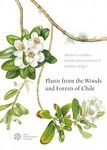About this book
Language: English with bilingual summary in English and Spanish
The Alibertia group (Gardenieae–Rubiaceae) comprises 12 neotropical genera and about 110 species, a few of which extend to extra-tropical areas in southern Brazil, Paraguay, and northern Argentina. Six genera and 50 species are monographed: Agouticarpa (7 spp.), Alibertia (15 spp.), Cordiera (25 spp.), Melanopsidium (1 sp.), Riodocea (1 sp.), and Stenosepala (1 sp.). The taxonomy, phylogeny, various aspects of morphology, and natural history are treated.
The genera of the group are characterized by being dioecious, woody plants with heteromorphic inflorescences (except Amaioua and Botryarrhena), heteromorphic flowers, contorted corolla aestivation, pollen grains released as monads, and baccate fruits. Agouticarpa is readily recognized by its caducous stipules, tiny calyx tube, pedicellate male inflorescences, and small to large, globular fruits. Alibertia and Cordiera are characterized by usually having capitate male inflorescences. The male corolla is (4-)5-6(-8)-merous in Alibertia and (3-)4-5(-7)-merous in Cordiera. Pollen grains are porate in Alibertia and colporate in Cordiera. The fruits in Alibertia are leathery or woody and (1-)5-10(-15) cm diam., whereas those of Cordiera are usually fleshy and 0.7-3(-6) cm diam. Melanopsidium may be recognized by their sheathing stipules that are split on one side, the rather congested cyme of the male inflorescences, and the ribbed ovary and fruit. Riodocea is easily recognized by its contorted, foliose calyx lobes that are persistent in fruit and 12-15-merous campanulate corolla. Stenosepala is characterized by its narrow calyx lobes, persistent, aristate triangular stipules, a large, rather sparse thyrse, and very hirsute ovary in female flowers.
Fourteen new taxa are described in this treatment: Alibertia curviflora var. loretana Delprete & C. H. Perss., A. edulis var. manuana Delprete & C. H. Perss., A. occidentalis Delprete & C. H. Perss., Cordiera bahiensis C. H. Perss. & Delprete, C. carioca C. H. Perss. & Delprete, C. coriacea C. H. Perss., Delprete & Popovkin, C. montana C. H. Perss., Delprete & Antonelli, C. mussunungae C. H. Perss. & Delprete, C. myrciifolia var. barbata C. H. Perss. & Delprete, C. myrciifolia var. peruviana C. H. Perss. & Delprete, C. papillosa C. H. Perss. & Delprete, C. rugulata C. H. Perss. & Delprete, C. stipulacea C. H. Perss. & Delprete, and C. tuberculata C. H. Perss. & Delprete.
Customer Reviews
























![Flora Neotropica, Volume 96: Drosera (Droseraceae) [Spanish]](http://mediacdn.nhbs.com/jackets/jackets_resizer_medium/15/158391.jpg?height=150&width=106)





![Gramineas de Bolivia [Gramineas of Bolivia]](http://mediacdn.nhbs.com/jackets/jackets_resizer_medium/81/81508.jpg?height=150&width=94)







![Costa Rica: Tropical Flowers [English / Spanish]](http://mediacdn.nhbs.com/jackets/jackets_resizer_medium/19/195410.jpg?height=150&width=64)








